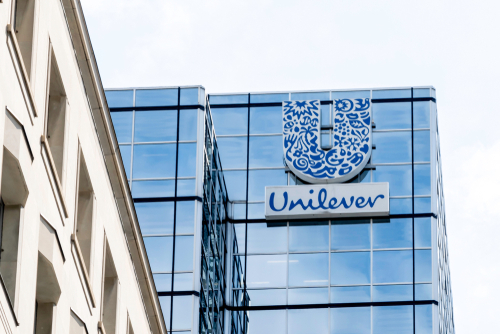Big companies are under an increasing amount of pressure from the media to become more sustainable. These corporations’ shareholders are now also advocating for a change for the better. For example, 99.6% of Unilever’s shareholders voted in favour of Unilever’s Climate Transition Action Plan to achieve zero greenhouse gas emissions across its operations by 2030.
Unilever has made impressive progress with their Sustainable Living Plan. They have become one of the leaders in sustainability, with the GlobeScan-SustainAbility naming Unilever the top Corporate Sustainability Leader for the 11th year in a row. There is certainly plenty we can learn from their approach. Here are 4 lessons that we can learn from Unilever’s sustainability Journey.
1. Big companies can make a big difference
It is often argued that for real change to happen, businesses need to make changes and Unilever has shown just how much of a difference big corporations can make. Thanks to their purchasing power, Unilever has generated huge change through their policies, from ensuring that their grid electricity is all sourced renewably, to halving supplier emissions by 2030 and achieving net-zero emissions across their supply chain by 2039.
2. We should set ambitious yet achievable goals
Unilever’s goals are ambitious. To illustrate: their goal to improve health and hygiene for 1 billion people by 2020 would be unrealistic for smaller companies and difficult for companies of Unilever’s size. Yet Unilever achieved this and even went beyond their goal, reaching 1.3 billion people. Unilever’s goal to reach net-zero emissions across their supply chain is ambitious, but it is manageable by working with their thousands of suppliers. There is a lot that we can learn from this. By working with your suppliers and using their skills, experience, and passion, even a small team can achieve more than working alone.
3. Customers react well when companies are sustainable
Each year, the number of customers that are switching to more sustainable options when shopping increases. On average, customers will pay 2-10% more when the supply chain is transparent and they can see where their products are coming from. It has become much more valuable to keep up with the sustainability movement as customers respond well knowing that they are buying from companies that are conscious about their impact on the Earth. Unilever’s Sustainable Living Plan has resonated with customers, with Sustainable Living brands growing 50% faster than the rest of the business. Being sustainable is ultimately good for business. By keeping consumers happy and being less wasteful, there is more money to be made.
4. Keeping on top of our sustainability goals is the best way to ensure that they are achieved
Unilever posts frequent CSR reports that detail which aspects have had an impact on their business and which issues need addressing. They also post frequent updates on the progress of their Sustainable Living Plan which allows them to track which goals are on target and those which need more attention. Within the Sustainable Living Plan, each goal has been broken down into smaller goals following a traffic light system to help show which goals are close to being completed. This is extremely useful for monitoring progress towards set goals and it can also motivate suppliers to reach these goals independently. Aligning suppliers to a common goal and holding them accountable plays an important role in building effective collaborations, and could inspire further innovation.




